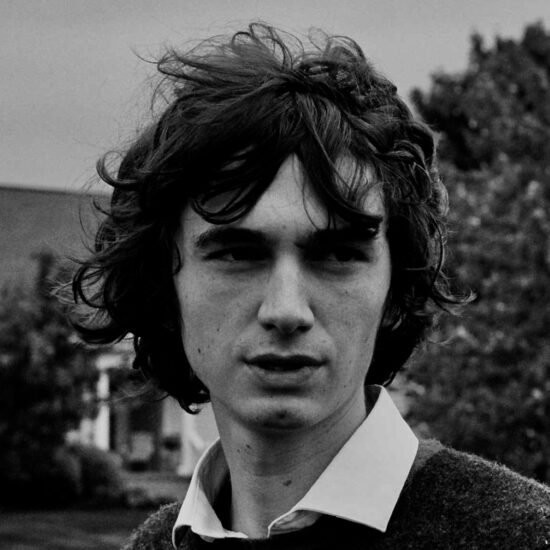Photo by Bettmann Archive/Getty Images
The U.S.-Canada border is the longest in the world. On any given day in North America, around 300,000 individuals cross the boundary between the two countries.
On a single, since forgotten, day in 1952, 35,000 people gathered at just one point on the border. The crowd was there not to cross, but to listen to a single voice. That voice belonged to Paul Robeson, the defiant Black singer, actor, and radical, who was forbidden from crossing the border himself due to his activism.
This photograph—one of the few surviving images of Robeson’s time at the border and the only photo in Getty Images’ extensive archival collection—has been taped to create a crop and frame Robeson at full song.
With his low bass-baritone voice, Robeson was a leading concert singer for much of the 1930s and 1940s, transforming “Negro spirituals” into an art form on concert stages from London to Moscow. In those decades, his politics sharpened as he spoke out against racism, labor exploitation, fascism, and colonialism. In 1950, Robeson tried to renew his passport but the US State Department denied his application because of his political beliefs.
In January, 1952, the International Union of Mine, Mill and Smelter Workers invited Robeson to sing in Vancouver. However, in spite of the fact that a passport was not required to cross the border, Robeson was turned back. He attempted to enter Canada again in February, accompanied by the Longshore Union leader and Communist, Harry Bridges, but was again turned away. The Canadian government cooperated with the United States to deny Robeson’s right to travel freely, but they could not stop his determination.
On the boundary between Blaine, Washington, and Surrey, British Columbia stood a Peace Arch that had been built to commemorate the 1814 Treaty of Ghent, which had ended the War of 1812. On May 18, 1952, 35,000 Canadians came to hear Robeson sing there. Since he could not cross the border, he stood resolutely on the U.S. side. Border guards could do little to stop his voice from passing to the lively Canadian crowd.
Introduced by Harvey Murphy, a Communist union organizer, Robeson stepped up to the mic on the bed of a truck parked next to the Peace Arch. “It seems that nothing can keep me from my beloved friends in Canada,” Robeson said.

He performed a series of labor songs and spirituals including “Ol’ Man River,” the song he immortalized with his performance in Show Boat and the labor song “Joe Hill.” The latter caused a stir when he performed it in 1947 at the University of Utah because it commemorated Hill’s execution decades earlier at the hands of a Utah firing squad over dubious charges.
After performing, Robeson spoke decisively about the undemocratic terror of the campaign against himself and Communists throughout the United States. He opted to be in “the picket lines,” helping to combat “the struggle of the people.” He promised the crowd, “I will never apologize for that.”
In his speech, he offered solidarity to the people of Mexico and Asia, to revolutionaries in China and the Soviet Union, as well as to the Communist poet Pablo Neruda in Chile. He also claimed that his sanctioning was due to his outspoken opposition to colonialism, which U.S. officials deemed “meddling” in their affairs. “Now that’s just too bad,” Robeson retorted in his closing statements, “because I’m going to have to continue to meddle.”
Although his travel was restricted and he was blacklisted in the United States, Robeson remained dedicated to changing the country whose leaders had done everything in their power to silence him. He stood firmly. “I speak as one whose roots are in the soil of my land,” he told the crowd.
Robeson came back to the Peace Arch for the next three years to perform. Each year, the Canadian and U.S. governments ensured that it was illegal for him to cross. Things only got worse for Robeson in the coming years with McCarthyism and the witch hunts of the House Un-American Activities Committee.
“It seems so simple,” Robeson pleaded from the bed of that truck, “that all people should live in full human dignity and in friendship.”

Learn more:
Paul Robeson, Here I Stand (Beacon Press, 1998).
Paul Robeson: The Great Forerunner, ed. Freedomways, Centennial edition (New York, International Publishers, 1998).





